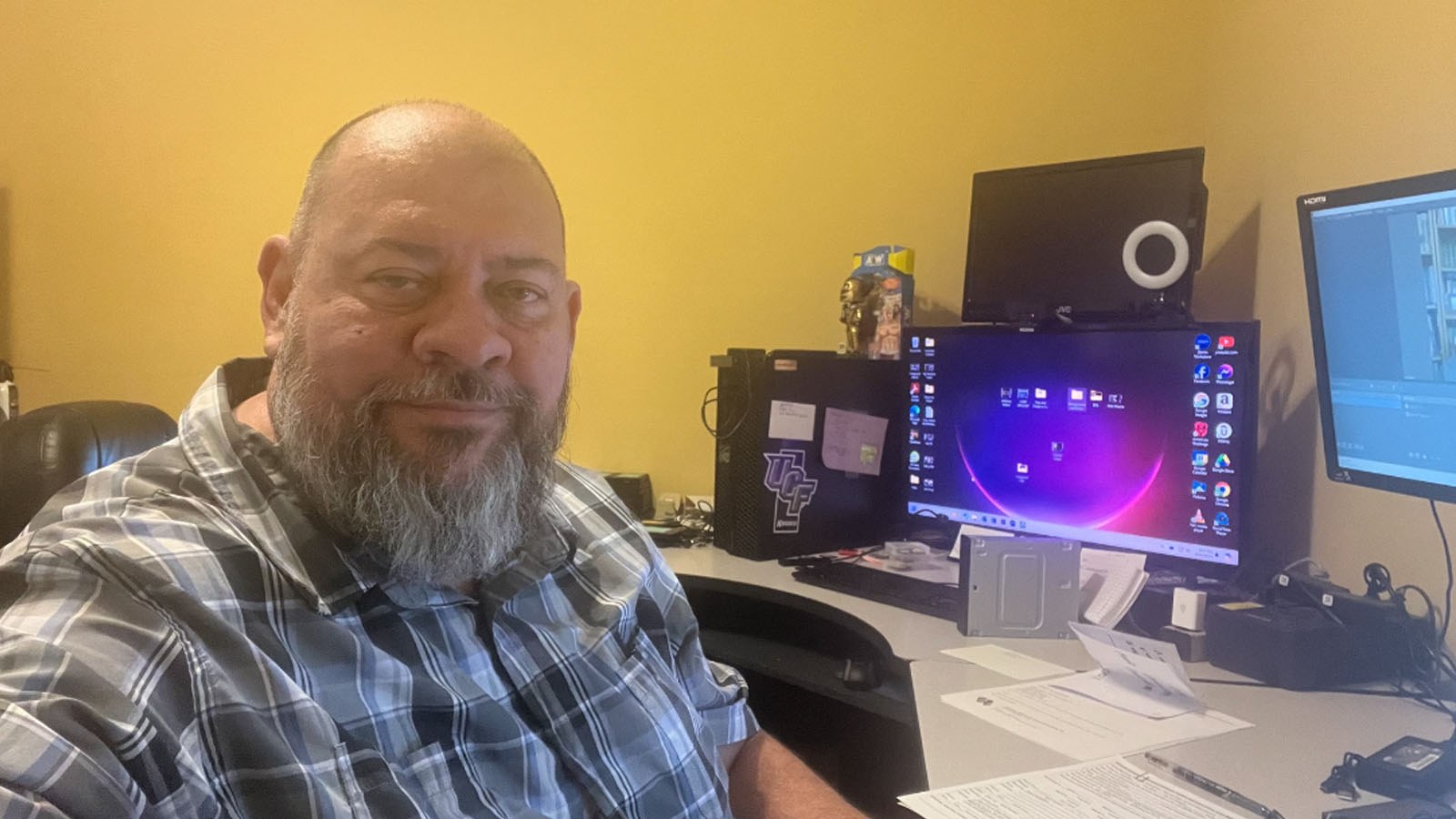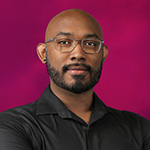Full Sail Stories
Published Jan 06, 2025
Faculty Spotlight: Dan Walker (Digital Arts & Design)
This instructor brings his experience in theme park motion graphics to the classroom.

Full Sail course director Dan Walker was part of the design team that created motion graphics for popular theme park attractions like Jurassic Park River Adventure and The Amazing Adventures of Spider-Man. Now he’s using his unique professional background to educate students who have a passion for motion graphics.
Dan worked as a Technical Designer and Post-Production Manager for ITEC Entertainment, a theme park design company. He helped develop motion graphics and program animatronics for attractions at Universal Studios Islands of Adventure in Orlando, including the Jurassic Park and Spider-Man rides, The Cat in the Hat, and Toon Lagoon.
“[When I was working on the graphics for the Spider-Man ride], I sat in the ride vehicle with the controller, and as the 3D video was playing, I was ditching and rolling and moving the ride vehicle to simulate that Spider-Man was landing on the vehicle we were flying through the city,” Dan recalls.
Although his schedule was demanding, he says it was all worth it.
“I was working a lot of late nights,” he says. “We had a newborn at the time. It was difficult and everything, but it was just such a rewarding [job].”
He also spent 18 months overseas helping to create motion graphics for rides at Universal Studios in Osaka, Japan.
Along his career journey, Dan taught himself Adobe After Effects. Knowing this design software came in handy when he started teaching Color Theory in the undergraduate digital arts and design curriculum at Full Sail in 2009. He now teaches Motion Graphics and Project and Portfolio VI: Visual Arts.
“I try to show the students where their industry is going. It's not just in film and TV production, it's marketing, it's corporate America, it's social media, it's everywhere now. Everywhere you look on any type of device, there's motion graphics and it's growing.”
In terms of his approach to teaching, he makes sure to incorporate the three most common learning styles: auditory, visual, and kinesthetic.
“I [want] to make sure that my lecture, my activities, my assignments [are] hitting all three of those tiers… So I use visuals and auditory elements, but then there's a hands-on component as well.”
In addition, he always encourages his students to be lifelong learners and carve out their professional passions over time.
"When you graduate, you are not done with education,” he says. “You will continue learning throughout your career… Find something that drives you every day. Find something that really just gets you going and just stay the course. You're going to have some ups and downs in your career, but if you love what you're doing, [you’re] going to eventually hit a home run.”



